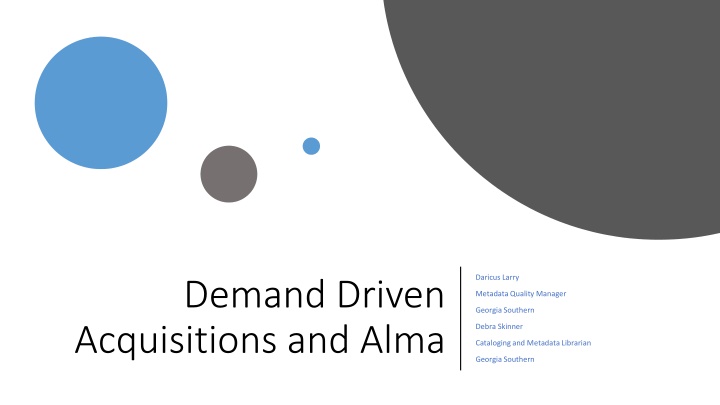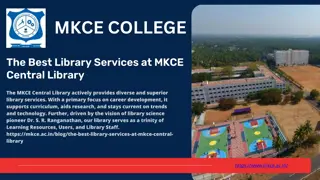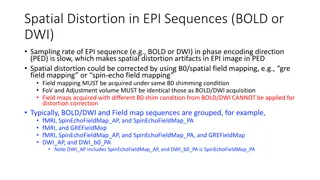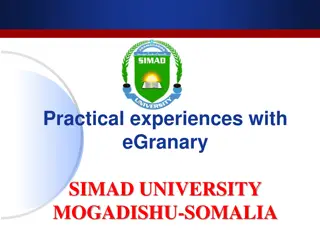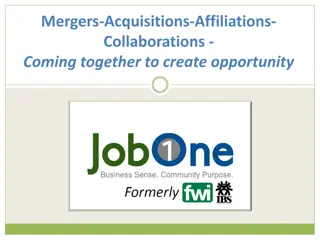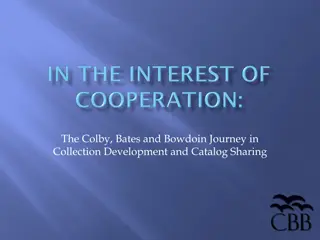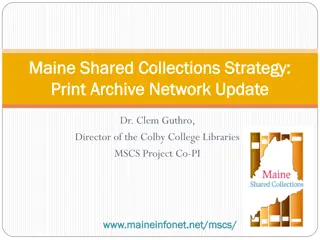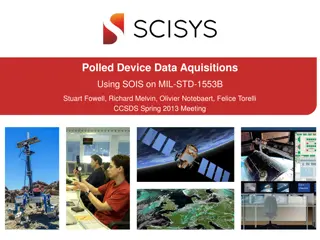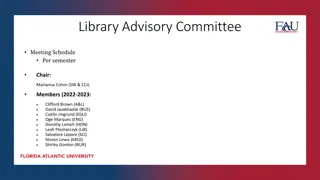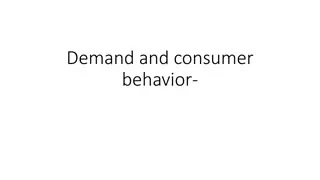Demand-Driven Acquisitions: Enhancing Library Collections
Daricus Larry, Demand Driven Acquisitions and Alma Metadata Quality Manager at Georgia Southern, shares insights on transitioning from an Approval Plan to Demand Driven Acquisitions. The shift aimed to optimize book purchases based on user needs, with an emphasis on faculty, staff, and student usage patterns. However, challenges arose with budget constraints and excess unused book inventory, prompting a reevaluation of the acquisition strategy. Despite initial concerns, the model garnered support from users but also necessitated more intensive purchasing efforts compared to traditional methods. The integration of ALMA and Demand Driven Acquisitions demonstrated enhanced acquisition capabilities, making on-demand titles more visible and accessible to library patrons through GIL-Find (Primo). With the ability for users to request purchases beyond the owned titles, the system offered a wider selection, including over 130,000 unique EDDA and nearly 50,000 unique PDDA titles.
Download Presentation

Please find below an Image/Link to download the presentation.
The content on the website is provided AS IS for your information and personal use only. It may not be sold, licensed, or shared on other websites without obtaining consent from the author.If you encounter any issues during the download, it is possible that the publisher has removed the file from their server.
You are allowed to download the files provided on this website for personal or commercial use, subject to the condition that they are used lawfully. All files are the property of their respective owners.
The content on the website is provided AS IS for your information and personal use only. It may not be sold, licensed, or shared on other websites without obtaining consent from the author.
E N D
Presentation Transcript
Daricus Larry Demand Driven Acquisitions and Alma Metadata Quality Manager Georgia Southern Debra Skinner Cataloging and Metadata Librarian Georgia Southern
At time of ALMA implementation, Georgia Southern was committed to on demand acquisitions for print and electronic books In May 2015, Library announced shift from Approval Plan to Demand Driven Acquisitions No more just in case Approval Plan Background Intention is to ensure that we purchase titles that will be used by faculty, staff & students Provide review sources (Choice) and encourage library liaisons and faculty to develop collections
Too many books purchased that were never used Why Continue Demand Driven Acquisitions Static budget = decline in purchasing power No longer feasible to fully develop collections & purchase as many books as in past
How Does it Work Load records for newly published books into catalog (print and electronic) Vendors provide records Titles appear in both GIL-Find Catalog and EDS ON DEMAND appears in Call Number field Available by Request appears in Location field Faculty and students make direct requests Requires user to login Result: purchase books directly requested by patrons
Buying what our users want/need Great buy in from users after initial faculty concerns Advantages & Disadvantages Not less work for staff Intensive purchasing process compared to traditional Approval Plan model
ALMA and DDA ALMA acquisitions capabilities well-suited to DDA model Purchase Request Options ON-DEMAND titles much more visible to users in GIL-Find (Primo) than in previous Voyager system Additional bonus: users can make purchase request for ANY title in the consortium not owned by GS and not just DDA titles 130,089 unique EDDA titles 49,249 unique PDDA titles.
Purchase Requests Appear in ALMA
Advantages of Purchase Requests Correspondence through ALMA is Automatic Query to patron asking for information Rejection notice Notice to patron that request has been approved Notice to patron that material has arrived/on hold Record of Purchases Export to Excel fiscal year report
Find a record in the NZ If a record wasn t available bring one in from OCLC First Workflow Click Order underneath the record in the NZ once the record had been brought in Fill out the appropriate purchase order instructions Create holdings and items.
Ordering a Title
Purchase Order Line Information
Facilitated an easy way of dealing with the backlog of items purchased during the technical services freeze Allowed catalogers to still have control over the MARC record that was chosen Advantages & Disadvantages Did not make use of purchase requests Vulnerable to change in Alma
A purchase request is created Sent from Ask Library to Purchase link in Primo. Manually entered into Alma The purchase request will be either attached to a DDA record or a brief record that was created by the purchase request. Purchase Request is then assigned to a cataloger. Cataloger selects the best MARC record and notes that the piece is DDA. Second Workflow
The cataloger then assigns the Purchase Request to the Acquisitions Manager, who will click order on the purchase request. As titles arrive they are checked against the chosen MARC record to make sure the metadata matches the piece. If not, the correct record will be found in the NZ or OCLC and exported. The cataloger then ensures that the PDDA record is no longer in the IZ. Second Workflow
Incorporated Purchase Requests into the workflow Catalogers no longer have to create Purchase Orders to link titles to the network zone Reduced number of steps needed to catalog materials Advantages & Disadvantages High potential for creation of duplicate records in the IZ Vulnerable to change in Alma
A purchase request is created Sent from Ask Library to Purchase link in Primo. Manually entered into Alma. The purchase request will be either attached to a DDA record or a brief record that itself created. The Purchase Request is reviewed and then assigned to the Acquisitions Assistant, who clicks order on the purchase request and orders the materials from the vendor. Once the piece has arrived a cataloger searches the NZ for the best MARC record. If one is not found it will be brought in from OCLC. Once the record has been found, the cataloger will t add the 035 to the brief record or the DDA record in order for the NZ record to overlay. Current Workflow
Simplifies the workflow and allows catalogers to wait for the piece to arrive before picking a record Reduces the relinking of Purchase Orders and potential of creating duplicate records Advantages & Disadvantages Allows separation of Acquisitions and Cataloging workflows Vulnerable to change in Alma
Electronic DDA titles are available to patrons the second they are loaded into the catalog. Patrons are unaware that they are purchasing EDDA titles by just simply using them. Alma makes managing and cataloging electronic resources easier than ever before. Problems in Alma that we ran into with PDDA titles were nonexistent with EDDA titles. What about electronic?
No workflow is set in stone. Instructions can easily become obsolete. The process is labor intensive since titles are bought one at a time. The blurring of the lines between cataloging and acquisitions complicates workflows. Small deviances from the workflow can cause unintended results. Alma s built in communications functions have enabled more responsive customer service. Documentation is essential, but must be flexible. Patience.Patience.Patience. Lessons Learned
